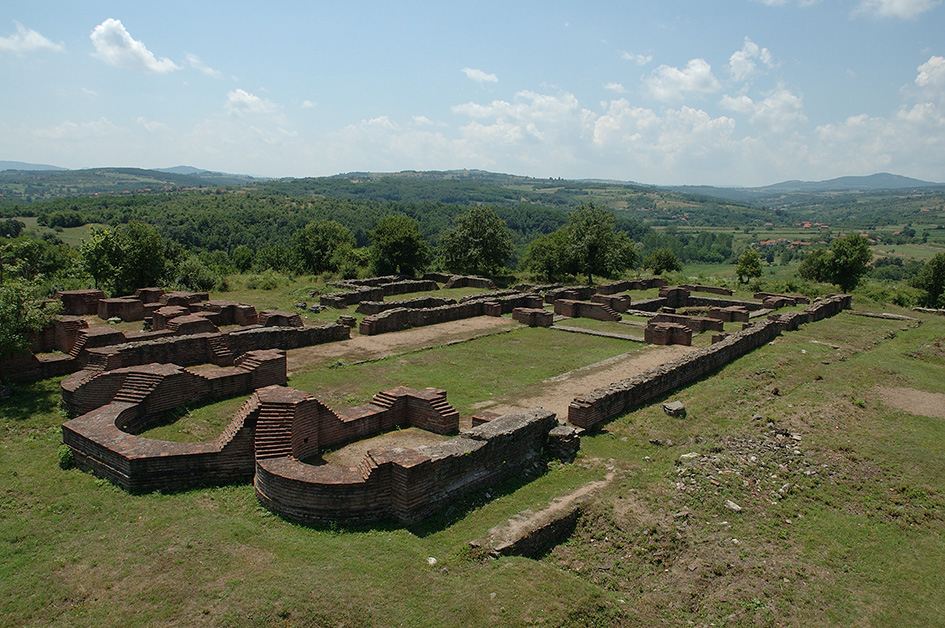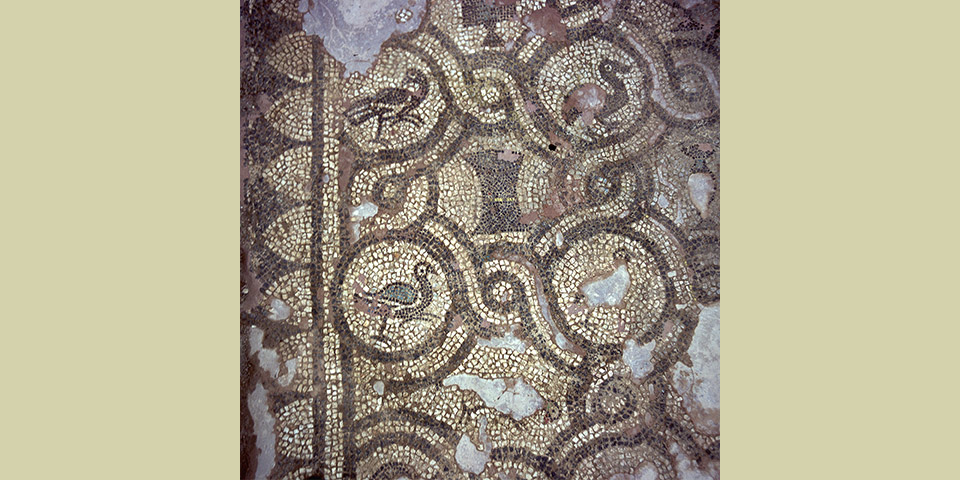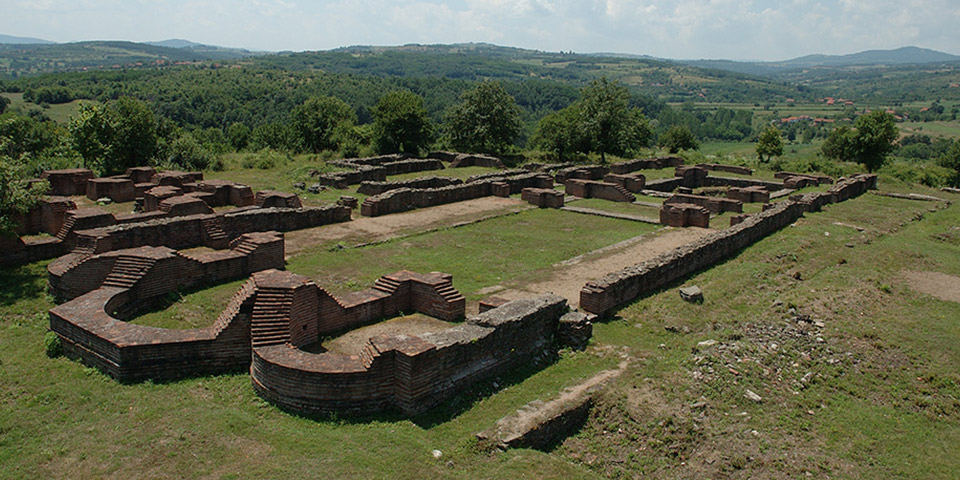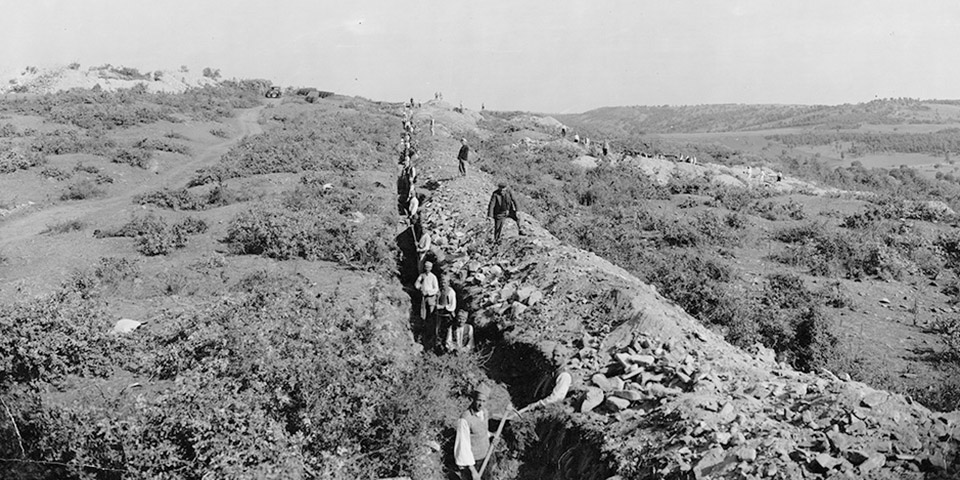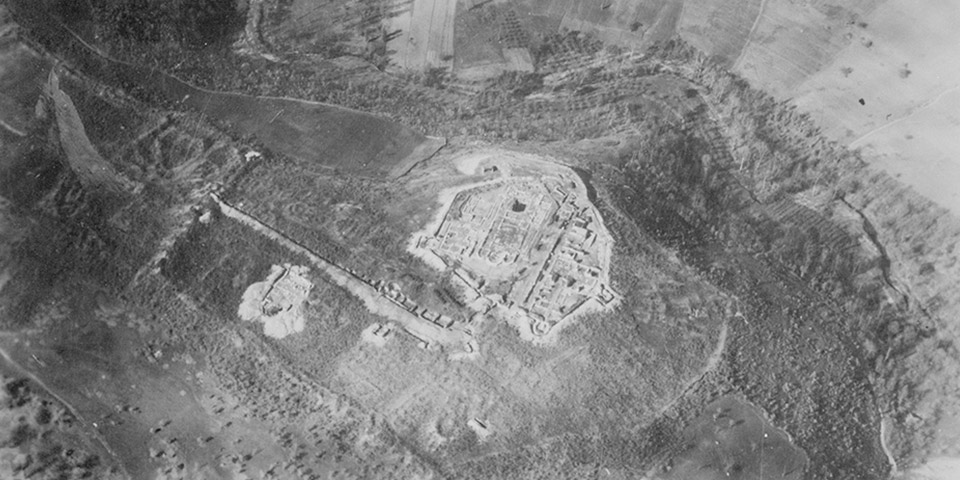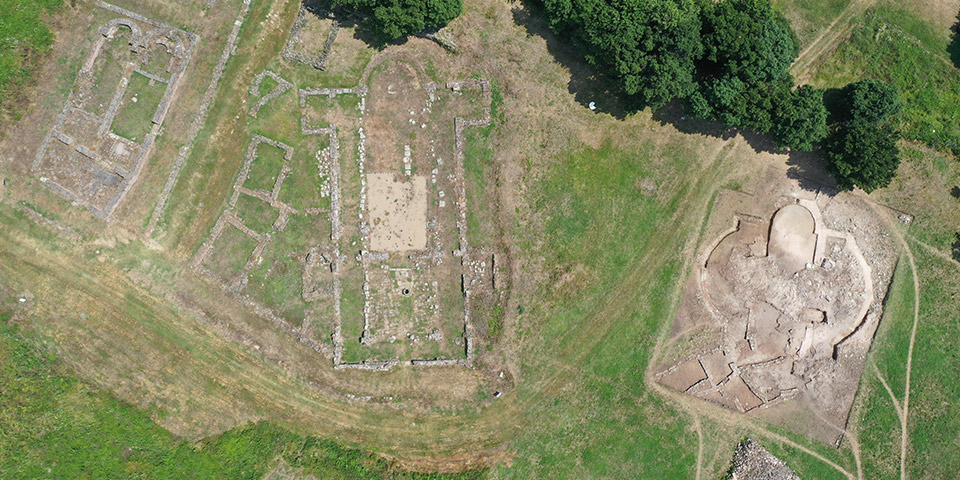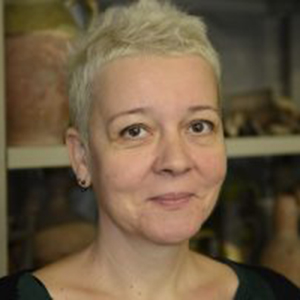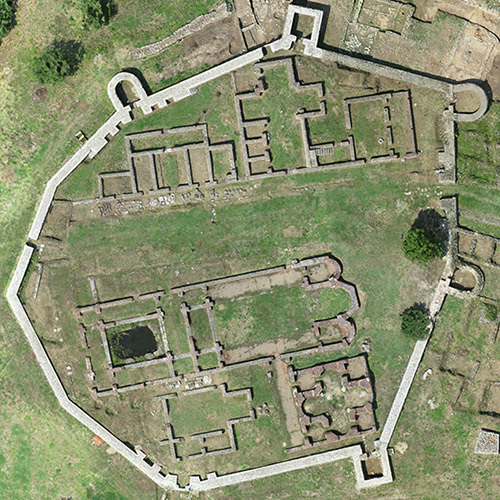
CARIČIN GRAD (Justiniana Prima)

Name of the project: Serbian-French research in the area of Caričin Grad
Research leaders:
Ivan Bugarski, PhD;
Katrin Vanderheide, PhD
Collaborators:
Vujadin Ivanišević, PhD;
Sonja Jovanović, PhD;
Vesna Bikić, PhD;
Nemanja Marković, PhD;
Nataša Miladinović-Radmilović, PhD;
Bernard Bavant, PhD;
Vladan Zdravković, PhD;
Vladimir Stojanović
Institutions involved in the research process:
Archaeological Institute;
École Française de Rome (French School at Rome);
Université de Strasbourg (University of Strasbourg);
Centre National de la Recherche Scientifique (National Centre for Scientific Research);
Leskovac National Museum
Caričin Grad, a site that most researchers today identify as Justiniana Prima, represents one of the most striking examples of the restoration of Illyricum carried out by Justinian II (527–565). The spirit of that restoration was recorded in the work “On Buildings” by Procopius of Caesarea, which mentions a large number of newly built and renovated fortifications in the area of Illyricum.
Part of the sweeping programme of reconstruction was the construction of new urban centres, among which Justiniana Prima stands out. The establishment of a new polis in the poorly urbanised interior of the Central Balkans, in the western part of Mediterranean Dacia, on the border with Dardania and outside the main travel routes, was a special act. Its construction can be explained by Emperor Justinian’s will to perpetuate the place of his birth, but also by the need to strengthen the interior by building a new church and administrative centre. The new metropolis was destined, according to the emperor’s 11th novella of April 15, 535, to be the seat of the archbishopric and the seat of the prefecture of Illyricum. The rights of the archbishopric were confirmed ten years later, with the 131st amendment dated March 18, 545. The fact that Justiniana Prima is not mentioned as the centre of civil power in the later novella is taken to confirm that the seat of the prefect of Illyricum remained in Thessalonica.
Caričin Grad represents, as research has shown, a newly built urban centre that can be identified with Justinian Prima. This is evidenced by strong fortification systems, a large number of administrative and public buildings, such as thermal baths, basilicas, city squares, wide streets with porticoes, an aqueduct, a cistern, a dam and a number of other objects, all discovered during decades of archaeological excavations. The archaeological picture fully corresponds to Procopius’ description of the city: In that place, also he constructed an aqueduct and so enabled the city to be abundantly supplied with ever-running water. And many other enterprises were carried out by the founder of this city — works of great size and worthy of special note. For to enumerate the churches is not easy, and it is impossible to tell in words of the lodgings for magistrates, the great stoas, the fine market-places, the fountains, the streets, the baths, the shops. In brief, the city is both great and populous and blessed in every way — a city worthy to be the metropolis of the whole region, for it has attained this rank. (De aedif. IV. 20–24).
Research history:
Vladimir Petković started exploring the city in 1912, and on that occasion he discovered the remains of the episcopal basilica. Excavations were renewed only in 1936, and by 1940 the Cathedral Basilica, the Baptistry, the Episcopal Complex and the ramparts of the Acropolis had been fully discovered, as well as parts of the Upper Town, where research was conducted on the Crucifix Church, the Basilica with the Crypt and the Round Square.
Excavations continued in 1947 and lasted, with short interruptions, until 1970. During that time, parts of the Upper and Lower Town were explored. The managers of the first research campaign were Aleksandar Deroko and Svetozar Radojčić, while the others were managed by Đorđe Mano-Zisi.
A new cycle of research started in 1975, and was expanded in 1978 by the inclusion of French institutions and researchers, which was encouraged by the engagement of Pierre Sebilleau, the then ambassador of the Republic of France, in Yugoslavia. The new project included two separate research programmes. The first, under the direction of Noël Duval and Vladislav Popović, related to the research and publication of sacral monuments, as well as the publication of previously researched basilicas. The second programme, under the direction of Jean-Michel Spieser and Vladimir Kondić, focused on examining profane buildings. The partners from the French side were the French School in Rome (École Française de Rome) and the Alfred Merlin Centre of the National Centre for Scientific Research (Centre Alfred Merlin, Centre Nationale de la Recherche Scientifique). As part of the first programme, carried out from 1978 to 1984, revisional research was conducted on the monuments on the Acropolis, the Basilica with the transept, the Crucifix Church and the Single-nave Basilica outside the city.
As part of the second programme, parts of the Principia, an important military institution, were excavated. From 1981 to 2008, with a break from 1991 to 1996, a part of the settlement in the south-western part of Donji Grad was investigated. Since 1997, the management of the project from the French side has been the responsibility of Bernard Bavant, from the University of Strasbourg (Université de Strasbourg), and since 1999, from the Serbian side, Vujadin Ivanišević from the Institute of Archaeology in Belgrade.
The project carried out from 2009 to 2019 was aimed at researching settlements, public buildings and communications on the northern slope of the Upper Town. Research into the Empress’s city gained new momentum in 2014 with the inclusion in a joint project of the Römisch-Germanisches Zentralmuseum in Mainz (Römisch-Germanisches Zentralmuseum, Mainz) and German experts, under the leadership of Rainer Schreg.
Current research:
In 2019, a new project was started – the excavation of one of the most significant basilicas in Tsarica’s town, the Tetrakonchos in the Lower Town. Since that year, Catherine Vanderheyde of the University of Strasbourg and the National Centre for Scientific Research (Université de Strasbourg; CNRS UMR 7044) has taken on the leadership of the French team as part of a research project that is realised in cooperation with Serbian researchers. Since 2023, the head of research at the Institute of Archaeology has been Dr Ivan Bugarski.
Selected bibliography:
Кондић В., Поповић В. 1977. Царичин Град, утврђени град у византијском Илирику, Београд.
Popović V. 1979. La signification historique de l’architecture religieuse de Tsaritchin Grad, XXVI Corso di cultura sull’arte ravennate e bizantina, Ravenna, 249–311.
Duval N., V. Popović 1984. Caričin Grad I: Les basiliques B et J de Caričin Grad, quatre objets remarquables de Caričin Grad, le trésor de Hajdučka Vodenica, Belgrade – Rome.
Bavant B., Kondić V., Spieser J.-M. 1990. Caričin Grad II: Le quartier sud-ouest de la Ville Haute, Belgrade – Rome.
Bavant B., Ivanišević V. 2003. Ivstiniana Prima – Caričin Grad, Beograd (Drugo izmenjeno izdanje Leskovac 2006; Treće Leskovac 2016).
Bavant B. 2007. Caričin Grad and the Changes in the Nature of Urbanism in the Central Balkans in the Sixth Century, in: The Transition to Late Antiquity. On the Danube and Beyond, A. Poulter (ed.) (Proceedings of the British Academy, 141), Oxford, 337–374.
Bavant B., Ivanišević V. 2007. Iustiniana Prima (Caričin Grad) – eine spätantike Stadt von Reissbrett, in: Roms Erbe auf dem Balkan, U. Brandl, M. Vasić (Hrsg.), Mainz am Rhein, 108–129.
Duval N., Popović V. 2010. Caričin Grad III: L’Acropole et ses monuments (cathédrale, baptistère et bâtiments annexes), Collection de l’École française de Rome 75/3, École française de Rome; Institut Archéologique de Belgrade, Rome – Belgrade.
Ivanišević V. 2010. Caričin Grad – The fortifications and the intramural housing in the Lower Town, In: Byzanz – das Römerreich im Mittelalter, Teil 2.2, F. Daim, J. Drauschke (eds.), Mainz, 747–775.
Ivanišević V. 2016. Caričin Grad (Justiniana Prima): A New-Discovered City for a ‘New’ Society, Proceedings of the 23rd International Congress of Byzantine Studies, Belgrade, 22–27 August 2016, Plenary papers, S. Marjanović-Dušanić (ed.), Belgrade, 107–126.
Иванишевић В., Бугарски И., Стаменковић А. 2016. Нова сазнања о урбанизму Царичиног града: Примена савремених метода проспекције и детекције, Старинар 66, 143–160.
Ivanišević V. 2017. Une capitale revisitée: Caričin Grad (Justiniana Prima), Comptes rendus des séances de l’Académie des Inscriptions et Belles-Lettres 2017/I, 93–114.
Baron H., Reuter A. E., Marković N. 2018. Rethinking ruralisation in terms of resilience: Subsistence strategies in 6th-century Caričin Grad in the light of plant and animal bone finds, Quaternary International XXX, 1–17.
Ivanišević V., Bugarski I., Stamenković S. 2019. The Outer Forts of Caricin Grad: Visualisation of Digital Terrain Models and Interpretation, Starinar LXIX, 297–317.
Bavant B., Ivanišević V. 2019. Caričin Grad IV. Catalogue des objets des fouilles anciennes et autres études, Collection de l’École Française de Rome 75/4, École Française de Rome; Institut Archéologique de Belgrade, Rome – Belgrade.


